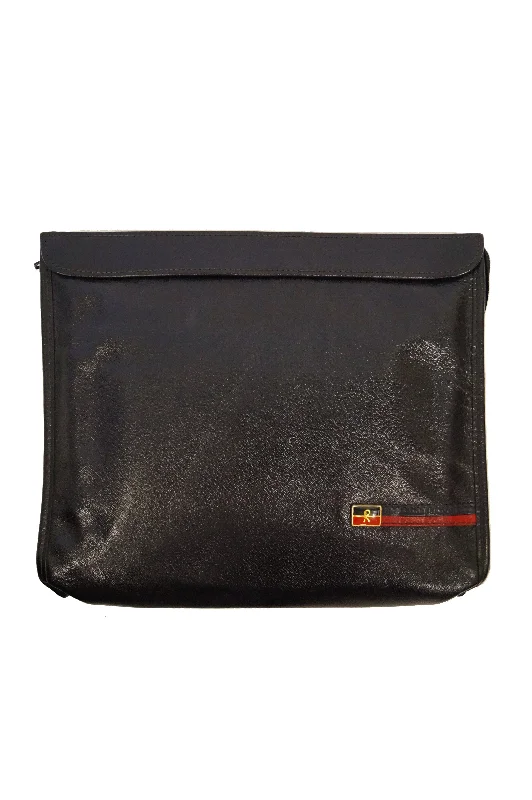Elegant black folio - style top zipper clutch by Roberta di Camerino. The piece is primarily composed of black pebbled leather, with rounded corners, and a zipper at the top. Features the famous Roberta "R" belt logo on a gold, black, and red stripe accent in the lower left of the bag. From the "Ambassador" line. Made in Italy.
Giuliana Camerino (née Coen) was born to a Jewish family in Venice. In 1943, as World War ii raged on, the Camerinos fled to Switzerland where Giuliana began designing handbags for local leather goods stores. Camerino founded the house “Roberta di Camerino” in 1945. The business was named after the 1935 Fred Astaire and Ginger Rogers film “Roberta”; The song “Smoke Gets In Your Eyes” was the last tune Camerino listened to before escaping to Switzerland.
Roberta di Camerino handbags quickly became known for their innovative use of patterned and colored fabric, two materials that had never been used in handbags. Camerino continued to develop new and interesting designs that would go on to inspire others, including using an “R”-trellis pattern in 1946 that predated Gucci’s iconic “G” pattern handbags and accessories, a the woven leather handbag in 1957 that anticipated the Bottega Veneta woven look, and a hinged handbag that Prada later went on to imitate. Camerino helped develop the post-WW2 venetian economy, employing venetian craftsmen to create many materials, including the brass hardware she used in her striking, cut-velvet bags, and to weave fabric using local antique looms. Camerino branched out into apparel; much of her clothing had distinctive optical illusion tromp l’oeil prints, pleats, buckles, and ruffles.






